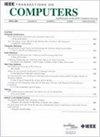Design of a Universal Decoder Model Based on DNA Winner-Takes-All Neural Networks
IF 3.6
2区 计算机科学
Q2 COMPUTER SCIENCE, HARDWARE & ARCHITECTURE
引用次数: 0
Abstract
DNA computing has proven to possess strong parallel processing capabilities, offering notable advantages for multi-objective computation. Traditional, complex nonlinear DNA molecular logic circuits require the pre-construction of basic logic gates, followed by their cascading to achieve logic functions. However, as the number of cascade levels increases, more DNA strands are required to amplify and recover signals, causing the system's reaction time to grow exponentially. This paper introduces a novel approach for building complex nonlinear digital logic circuits using DNA winner-take-all neural networks. The logic circuit comprises four computational modules: weight multiplication, summation, competitive annihilation, and reporting. First, an annihilation strand is designed to control the reaction rate between two competing signals, resolving the interference between weight multiplication and competitive annihilation. Second, new grouping strategies—complementary annihilation, equal annihilation, and denoise annihilation—are introduced. These strategies exponentially reduce the number of competitive strands and significantly decrease system reaction time. The effect becomes more pronounced as the number of input patterns increases. Finally, 2-4, 3-8, and 4-16 decoder circuits are built using the winner-take-all neural networks, and an求助全文
约1分钟内获得全文
求助全文
来源期刊

IEEE Transactions on Computers
工程技术-工程:电子与电气
CiteScore
6.60
自引率
5.40%
发文量
199
审稿时长
6.0 months
期刊介绍:
The IEEE Transactions on Computers is a monthly publication with a wide distribution to researchers, developers, technical managers, and educators in the computer field. It publishes papers on research in areas of current interest to the readers. These areas include, but are not limited to, the following: a) computer organizations and architectures; b) operating systems, software systems, and communication protocols; c) real-time systems and embedded systems; d) digital devices, computer components, and interconnection networks; e) specification, design, prototyping, and testing methods and tools; f) performance, fault tolerance, reliability, security, and testability; g) case studies and experimental and theoretical evaluations; and h) new and important applications and trends.
 求助内容:
求助内容: 应助结果提醒方式:
应助结果提醒方式:


